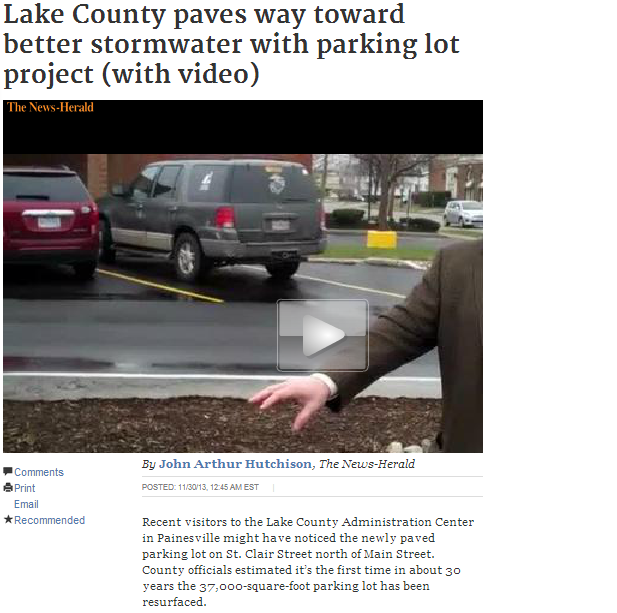A newly paved parking lot in Painesville City, Ohio is showing how effective storm water management practices could be, as reported by John Harold Hutchison in The News-Herald:
The existing topography of the parking lot forces water to flow toward the eastern end where porous concrete was installed to allow water to easily infiltrate into the ground rather than flow unimpeded into nearby storm sewers.
Curb cuts that lead to infiltration trenches in the same vicinity also were built.
“What we tried to do through the infiltration trenches and concrete was intercept (the water) before it made it’s way into the storm sewer,” Miller said.
Native plants that can resist drought conditions and also survive through pond-like conditions were planted in these infiltration trenches to help provide colorful decoration and to absorb water, he said.
Storm water management has become one of the latest focus of many state and local governments, particularly in areas where flooding occurs during heavy storms. Storm water runoffs are a major source of flooding in urban areas, such as Painesville City, and the contaminants in flood waters are known to help breed disease-causing microorganisms, such as mold and bacteria. Furthermore, these contaminants can also get into water systems, causing ecological and environmental problems.
Concerned government agencies, such as the EPA, have come up with several storm water best management practices (BMP) which they hope local governments and private entities will readily adopt. Additionally these agencies, together with private organizations and environment advocates, are continuously educating the public about storm water runoffs and effective stormwater management BMP. The goal is to raise awareness on stormwater runoff issues, and to get everyone to do their share to address these issues.
Innovations from several companies, such as StormChamber, have also been contributing to the successful implementation of stormwater BMP. By using the latest technology, stormwater can be effectively collected from streets, open lots, and households, and stored in ecologically designed and placed containers or chambers.
From there, the stored water may be gradually and safely released back into the environment, or filtrated and sent back to households for use in washing cars and cleaning driveways. Thus, these stormwater BMP not only help in preventing floods and water pollution, but also in preserving one of Earth’s most precious natural resources – water.
(Article excerpt and image from Lake County paves way toward better stormwater with parking lot project, The News-Herald, November 30, 2013)






